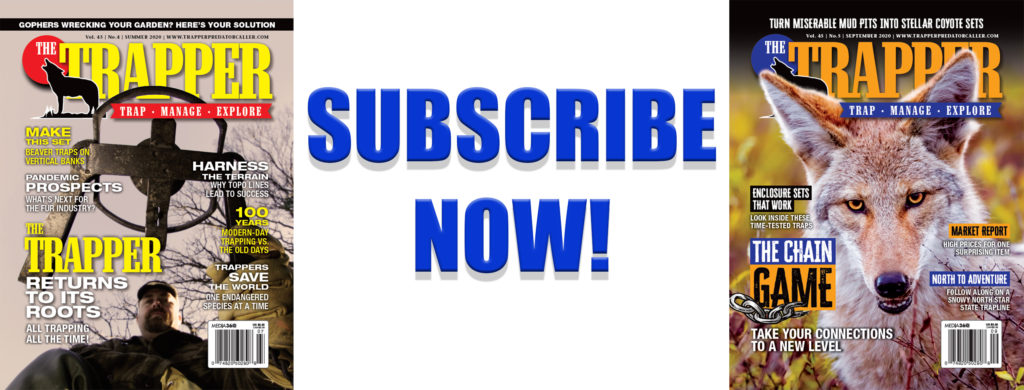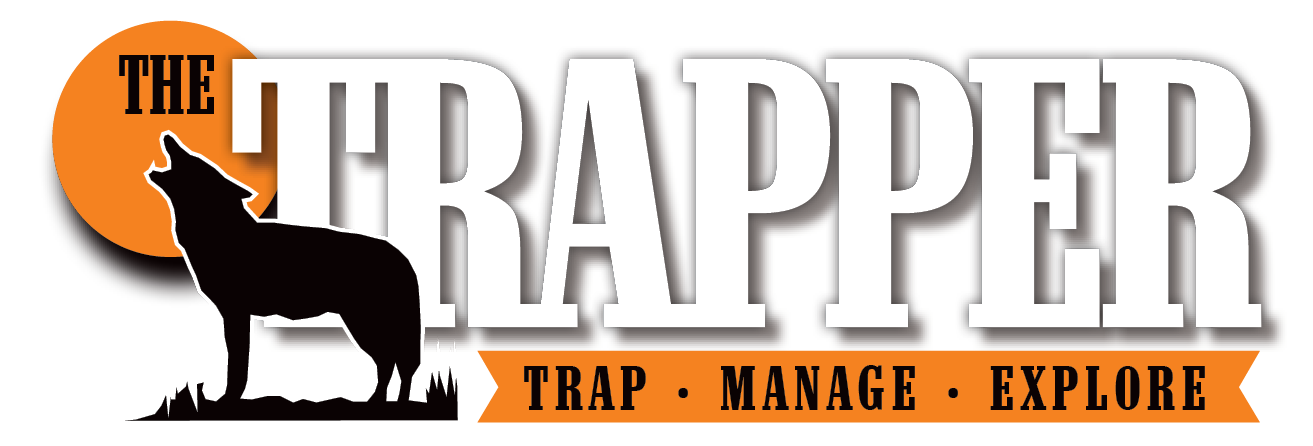Trapping seasons across North America are coming to an end when we enter into February. Fur is still prime, but for many southern regions, the turn to spring is arriving fast, and many critters will also start breeding soon. Yes, it is still winter in Canada, but snow is at its deepest point, ice is as thick as it will ever be, and most trappers have by now harvested most of what they will harvest this season.
If you started in November, February is the fourth month of commercial fur harvesting, and by now the greatest part of the fur crop is in the fur shed. Everyone now turns to selling, and if you have followed this industry for the last little while, you are well aware of the very tough times we are facing. There should be no surprises this year — if that is a good thing — since hardly any magical event has occurred that will turn things around. The market was struggling to start with, then the pandemic made it worse, and there has been very little change since then — at least nothing for the better. Pessimistic maybe, but realistic expectations are what we must accept.
The worldwide pandemic caused by the coronavirus has certainly impacted the ability of international buyers to travel and buy fur here in North America, and it also has had another terrible result. In Denmark, COVID-19 infection of ranch mink, yes, ranch mink sick with COVID-19 — has led to massive culling of Danish mink, which will result in huge amounts of pelts further flooding an already saturated market.
Prices for ranch mink were already well below production costs, and sales were limited, and extremely selective. But now this expected inflow of additional pelts will further delay the recovery we need — the recovery that all of us expect to arrive when the ranch mink overproduction is gone, sold and out of the way. In the meantime, all of these ranch mink skins will stall the market for short-haired wild fur, simply because ranch mink pelts are larger, more uniform, easier to tan and defect-free compared to wild skins.
Denmark has called an end to mink ranching for 2021, so this is bad news for us until at least 2022. There — I have said my pessimistic peace. Unfortunately, we may have a few more tough years ahead.
Our only bright spot remains coyotes. Western coyotes still attract a lot of attention, and yes, the fashion trend for parka trim still exists, but even that market is now showing signs of slowing down. When a market cools off, the first signs are that lower-quality goods become tougher to sell, and in the coyote world, lower-quality pelts for trim are Eastern coyotes.
Eastern coyotes are overall darker, with longer hairs, a coarser feel and hardly any have white bellies, most being pinkish or off-color. Western coyotes are thick, soft, pale, with shorter manes and whiter bellies, allowing the use of belly fur for some items. For this reason, Western coyotes continue to do well, and although prices have softened up, there are still many coyotes selling at more than $100 USD each. But, the scale will slide down fast when imperfections show up.
Eastern coyotes will have a tough time reaching $50. Buyers seem to have no trouble filling orders with Western coyotes, especially now that one of the biggest players in this game, Canada Goose Company, has announced that it will no longer buy “fresh” coyote fur for its garments. Coyotes were our bright spot, west and east, but now Eastern trappers have lost their highest value item.
For water trappers, the most “price-worthy” item in the fur shed is … castoreum! The very tough beaver fur market has greatly impacted the harvest, and with lower harvest, the availability of castoreum has dwindled, so prices have climbed to now more than $100 per pound for well-handled castor glands!
Some large beavers may bring you $20 to $25 in castoreum, and that may be more than what you will get for the skin in some cases. So if you trap beavers this spring, handle the castor glands properly, do not over-dry them, and sell them fast — they may become your most valuable item in the fur shed.
Plus, if you can, find a market for beaver carcasses, either for meat, bear bait or dog food. With the combined sale of meat, hide, castor glands, and maybe even the tail and the skull, you may still be able to trap $30 to $40 beavers. It just will not be $40 for the skin alone.
Muskrats will likely remain in the $2 to $3 zone for a while, and wild mink, well, hardly more than a very good muskrat at $3 to $8. River otters will have a tough time exceeding $30 for the very best. The top raccoons from the very best sections may bring $20 to $25, but most raccoons will sadly hover in the $3 to $10 range.
Long-hair furbearers will be difficult to sell again, as well. Red foxes generate little interest, but cross and silver foxes always find buyers. Martens and fishers have been a great disappointment, and $20 to $30 will probably be the new normal, with exceptional skins bringing $40 or a little more.
I expect that the first big international wild fur sale will be April 9-13, 2021, when Fur Harvesters Auction (www.furharvesters.com) will hold its largest sale of the year, this time in partnership with American Mink Exchange (www.americanminkexchange.com). We all hope that by then, either we have a vaccine for COVID-19, or travel restrictions are lifted so that more international buyers can attend, and that prices will stop decreasing.
In closing, this trade needs all of the help that it can get right now. As a trapper, make sure you harvest fur when it is prime, handle it well, try to find alternate markets or find a market for off-products like meat, skulls, claws, etc. Have fun trapping, take a kid along, slow down and take pictures, take the time to enjoy it all. The fun in trapping has not changed, and the entire trade wants you to be around when the markets finally recover.


